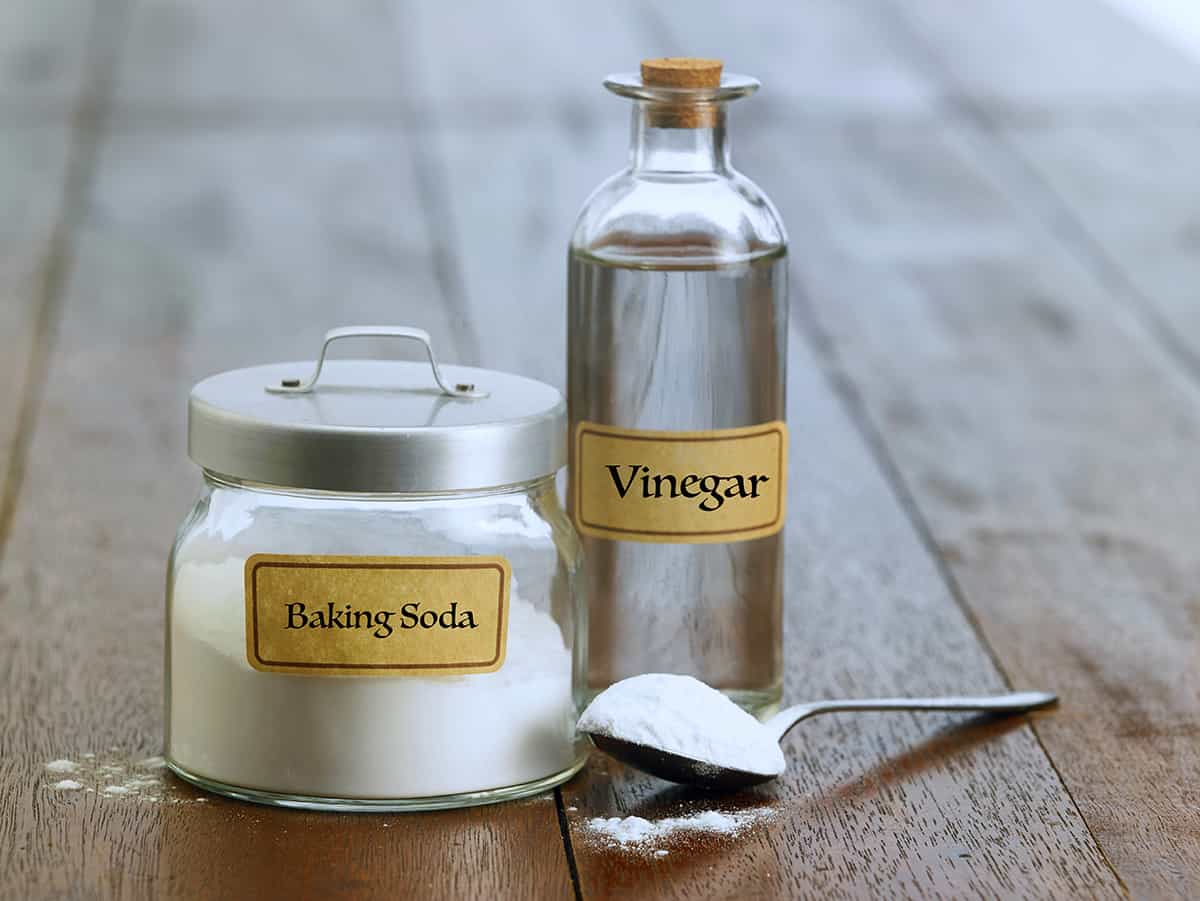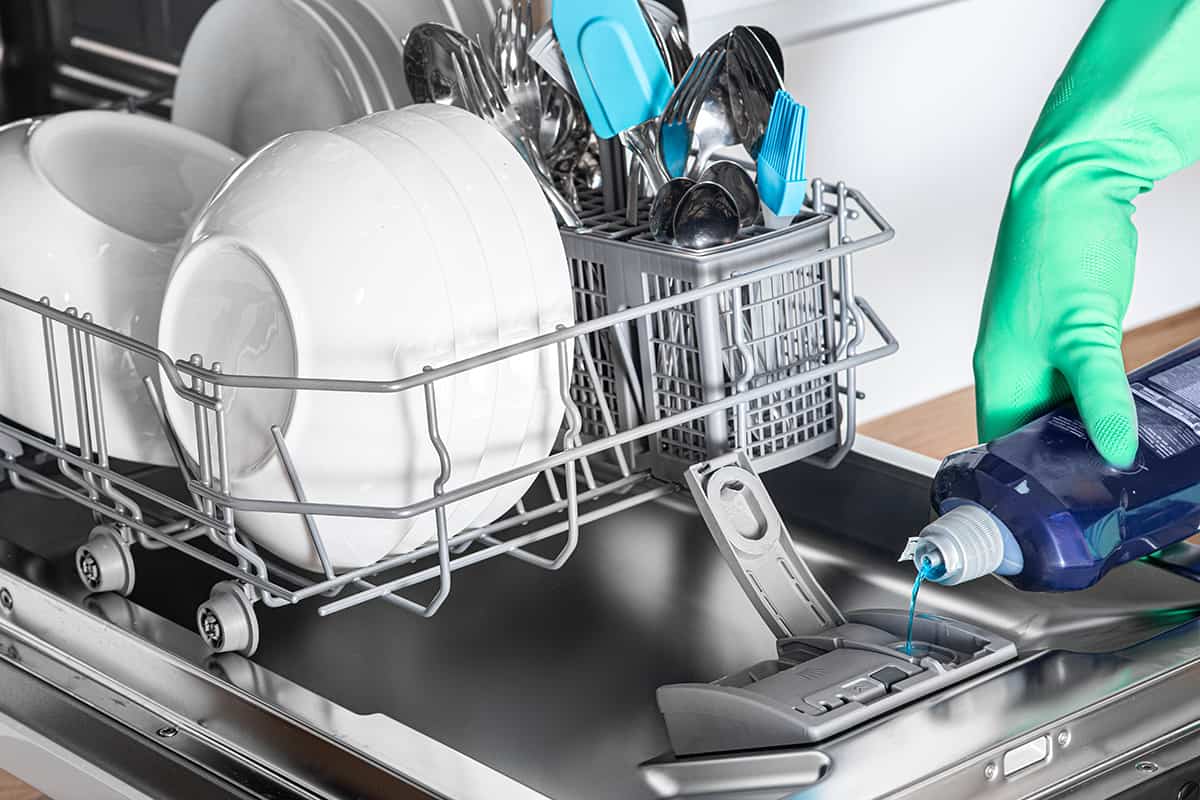Dishwashers have become an essential appliance in our homes, making dishwashing a more efficient and less time-consuming task.
However, it can be frustrating to find that even after a full cycle, our dishes are not as clean and spotless as we’d like them to be. Enter rinse aid—an often overlooked solution that could make all the difference in the quality of our dishwasher’s performance.
A rinse aid is a liquid additive used in dishwashers to improve drying and reduce water spots and streaks on dishes. While it’s not mandatory, using a rinse aid can enhance your dishwasher’s efficiency and result in cleaner, drier dishes.
In this comprehensive guide, we’ll dive deep into the world of rinse aids, exploring their benefits, how they work, and whether or not you should use them.
The Basics of Rinse Aid
A rinse aid is a liquid that you add to your dishwasher in a special compartment, separate from the detergent. It contains special chemicals called surfactants, which help water slide off the dishes more easily.
During the dishwasher’s final rinse cycle, the rinse aid is released and mixed with the water. The surfactants in the rinse aid work their magic by reducing the surface tension of the water. This causes the water to spread out and form a thin layer on the dishes instead of clinging to them in droplets.
As the dishwasher’s heating element warms the air inside, this thin layer of water evaporates quickly, leaving the dishes dry and free from spots or streaks. In addition, rinse aids can help to prevent soap residue from settling on the dishes, which can cause them to look dull or dirty even after being washed.
Types of Rinse Aids
Not all rinse aids are the same. There are different types available in the market, each with its own unique features and benefits. Let’s take a look at the various types of rinse aids and what sets them apart.
1. Commercial rinse aids

Commercial rinse aids are the most common type found in stores. They are produced by popular detergent brands and are specifically designed to work with modern dishwashers. Some commercial rinse aids also have added benefits, such as glass protection to prevent etching or extra shine for your dishes.
2. Natural or eco-friendly alternatives
If you’re concerned about the environmental impact of traditional rinse aids or prefer a more natural approach, eco-friendly rinse aids might be the right choice for you. Eco-friendly rinse aids may contain natural surfactants derived from plants, like coconut or palm oil.
3. DIY rinse aid options

If you’re interested in making your own rinse aid at home, there are a few simple and cost-effective options to consider. One popular DIY rinse aid solution is white vinegar, which is safe to use in a dishwasher and can be used in place of a store-bought product.
To use vinegar as a rinse aid, simply pour it into your dishwasher’s rinse aid compartment. You can also mix vinegar with water in a 1:1 ratio and add it to the rinse aid dispenser if you find pure vinegar to be too strong.
Another DIY option is to mix one part baking soda with three parts water and add this solution to the rinse aid compartment. Baking soda is a mild abrasive that can help to remove spots and residue without harming your dishes.
The Rinse Aid Debate—To Use or Not to Use?
There’s a lot of debate about whether or not to use rinse aids in your dishwasher. Some people swear by them, while others believe they’re not necessary. Let’s weigh the pros and cons and consider different factors to help you decide if using a rinse aid is right for you.
Pros
- Improved drying—Rinse aids help dishes dry faster, reducing the need to towel-dry them after a wash.
- Spot and streak reduction—They prevent water spots and streaks, making your dishes look cleaner and more presentable.
- Energy efficiency—Rinse aids can help your dishwasher work more efficiently, saving energy and money on utility bills.
- Longer dishwasher life—By preventing mineral buildup, rinse aids can help prolong the life of your dishwasher.
Cons
- Chemicals—Some people are concerned about the chemicals in rinse aids and their potential impact on health and the environment.
- Cost—Using a rinse aid regularly can add to the overall cost of running your dishwasher.
- Not always necessary—Depending on your dishwasher and the hardness of your water, you might not need a rinse aid to get satisfactory results.
How to Use Rinse Aid
Using rinse aid is simple and can make a big difference in your dishwasher’s performance. Here’s a step-by-step guide on how to use rinse aids effectively.
1. Locating the rinse aid dispenser in your dishwasher
First, you’ll need to find the rinse aid dispenser in your dishwasher. It’s usually a small compartment near the detergent dispenser, often marked with a symbol that looks like a raindrop or a wavy line.
2. Properly filling the dispenser
To fill the dispenser, open the small cap or lid on the compartment. Pour the rinse aid slowly into the dispenser until it reaches the maximum fill line. Be careful not to overfill it, as this can cause the rinse aid to leak or not work properly. Once it’s filled, close the cap securely.
3. Adjusting rinse aid settings for optimal results
Some dishwashers have adjustable rinse aid settings that allow you to control how much rinse aid is released during each cycle. Check your dishwasher’s user manual to see if this feature is available and how to adjust it.
Maximizing Dishwasher Performance Without Rinse Aids
If you decide not to use a rinse aid, there are still several ways to improve your dishwasher’s performance and get cleaner, drier dishes. Here are some tips and tricks to help you get the most out of your dishwasher without relying on rinse aids.
1. Proper Loading Techniques
Loading your dishwasher correctly can make a big difference in how well it cleans and dries your dishes. Follow these tips for optimal results:
- Organize dishes by size and type—Place larger items like pots and pans on the bottom rack and smaller items like glasses and cups on the top rack.
- Avoid overcrowding the dishwasher—Give your dishes enough space to ensure water can reach all surfaces.
- Angle dishes downward—This helps water drain off the dishes more easily, reducing spots and streaks.
2. Choose the Right Detergent
The detergent you use can also impact your dishwasher’s performance. Look for a high-quality detergent that’s specifically designed for dishwashers. Some detergents have added ingredients to help with hard water, which can minimize spots and residue without the need for separate rinse aid. And make sure to add sufficient detergent amount to your dishwasher to prevent residue on your dishware.
3. Use the Right Dishwasher Settings
Many modern dishwashers have multiple settings and features designed to improve cleaning and drying. Consult your dishwasher’s user manual to learn about these options and choose the right setting for your needs. For example, some dishwashers have a “high-temperature wash” or “sanitizing” option, which can help with drying and reducing spots.
4. Regular Dishwasher Maintenance
Keeping your dishwasher clean and well-maintained can help it work more efficiently and reduce the need for rinse aids. Here are some steps to follow:
- Clean the dishwasher filter—Regularly check and clean the filter at the bottom of your dishwasher to prevent clogs and improve water flow.
- Inspect the spray arms—Make sure the spray arms are free of debris and functioning properly.
- Run a cleaning cycle—Periodically run an empty dishwasher on a high-temperature setting with a dishwasher cleaner to remove buildup and keep it running smoothly.
FAQs
1. How often should I refill the rinse aid dispenser?
The frequency of refilling the rinse aid dispenser depends on how often you run your dishwasher and the rinse aid setting. On average, you might need to refill it once a month. Keep an eye on the rinse aid indicator on your dishwasher (if it has one), which will show you when it’s time to refill.
2. Can I use vinegar as a rinse aid?
Yes, you can use white vinegar as a natural, DIY rinse aid. Vinegar helps break down minerals and soap residue, leaving your dishes spot-free. Simply pour vinegar into the rinse aid dispenser or mix it with water in a 1:1 ratio if pure vinegar is too strong. However, vinegar might not be as effective as commercial rinse aids in some cases.
3. Are rinse aids safe for septic systems?
Some rinse aids are safe for septic systems, as they are designed to break down in water. However, it’s always best to check the label of the rinse aid you’re using to make sure it’s septic-safe. If you’re concerned about the environmental impact, consider using eco-friendly or natural rinse aids, which are typically safer for septic systems.
4. What should I do if my dishwasher doesn’t have a rinse aid dispenser?
If your dishwasher doesn’t have a rinse aid dispenser, you can still improve drying and reduce spots by following proper loading techniques, using high-quality detergent, and maintaining your dishwasher regularly. You can also try adding a small cup of white vinegar to the top rack during the final rinse cycle to help with spot reduction.






